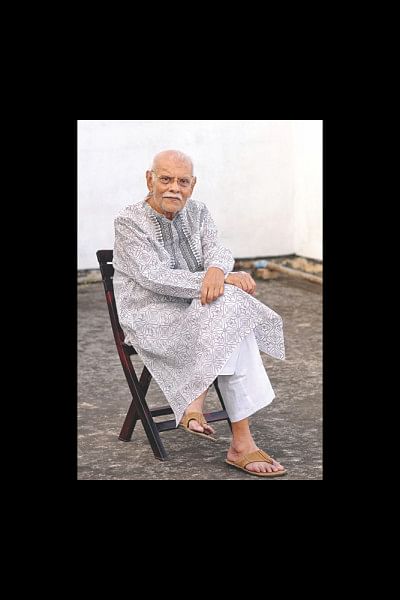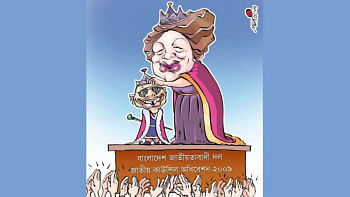A tribute to Sirajul Islam

Veteran actor-director Sirajul Islam who passed on the day before yesterday (March 24) leaves behind a deep imprint in the film industry. The winner of the prestigious National Award for the film “Chandranath” in 1985, Siraj transformed the face of Bangladeshi cinema with his roles in over 300 films, the most notable “Raja Elo Shohorey”, (his first feature film) and “Sheet Bikel”. Alongside he found the time to pursue his passion for theatre-- stage plays “Kena Bechar Pala” and “Fa(n)sh” are remembered even today.
But even as he retired as the director of Department of Films and Publication (DFP), his one dream that remained unfulfilled was to witness the revival of his beloved filmdom.
Reflective of Siraj's disillusionment with the country's celluloid world was his decision to quit films altogether. In the year 2000 he acted in the film “Ami Bou Hobo”, directed by Hasmat, after which he never set foot at the Film Development Corporation (FDC).
“Possibly this is one of the very few countries without a film institute, although there is no lack of potential,” said Siraj dismally.
“Khan Ataur Rahman, Zahir Raihan, Subash Dutta and others have tried at different times to develop an institute with the help of the Producers Association, but all in vain.”
Siraj's journey started way back in the mid-1940s. He talked of a time when the entertainment world centred on the radio and theatre and the film world was in its infancy.
“It was the time right after Partition when many crossed the border, creating a vacuum in the cultural field. The radio station was the stepping stone for many theatre professionals,” he added.
Theatre in Bangladesh took root in the '60s and progressed by leaps and bounds during the '70s. According to him, there was a spontaneous movement to promote theatre in every community, in Dhaka. This was mostly arranged by collecting funds from affluent community members. It was a time when it was unimaginable to think about women practising songs and dance numbers even in the confines of households. However, gradually, women came to play active roles in the cultural field, pointed out Siraj.
“The railway institute, then known as Mehboob Ali Institute, situated right beside the present National Medical Hospital, was the hub of cultural activities,” reminisced Siraj.
“A raised platform at the Natmondir served as an ideal stage. Despite the humble settings, eminent theatre artistes from Kolkata such as Tripti Mitra, Shambhu Mitra, Sattya Banerjee and others would often come to perform in Dhaka.”
“There were no designated rehearsal locations and so rehearsals were often held in different households. Even though the locations were different there was one commonality --the scrumptious khichuri at the end of the final rehearsals!” continued the veteran actor with a smile.
Alongside theatre, there was the Film Development Corporation, better known as FDC. The film industry's pioneers were Ehtesham, Mashiuddin Shaker, Salauddin and Fateh Lohani.
There was little question of idolising any actor. As he said, “We had an original style. However, people would often call me Biswas da, referring to eminent actor Chhobi Biswas. Dr. Rowshan Ara, Nasima Khan, Johorat Ara, Lilly Khan and others were my co-stars. In the film “Mishore Konnya” I starred with Shameem Ara of Pakistan. That was the only time I had to shave off my moustache and when I returned home late at night after a shoot, my wife almost fainted, taking me to be a stranger knocking at the door at an unearthly hour.”
With his critical eye, Siraj was unhappy with the scenario in the theatre and film world—the lack of theatre space or innovation, unplanned settings, the lack of opportunities for young playwrights and most importantly the lack of initiatives to train and promote professionals.

 For all latest news, follow The Daily Star's Google News channel.
For all latest news, follow The Daily Star's Google News channel. 



Comments